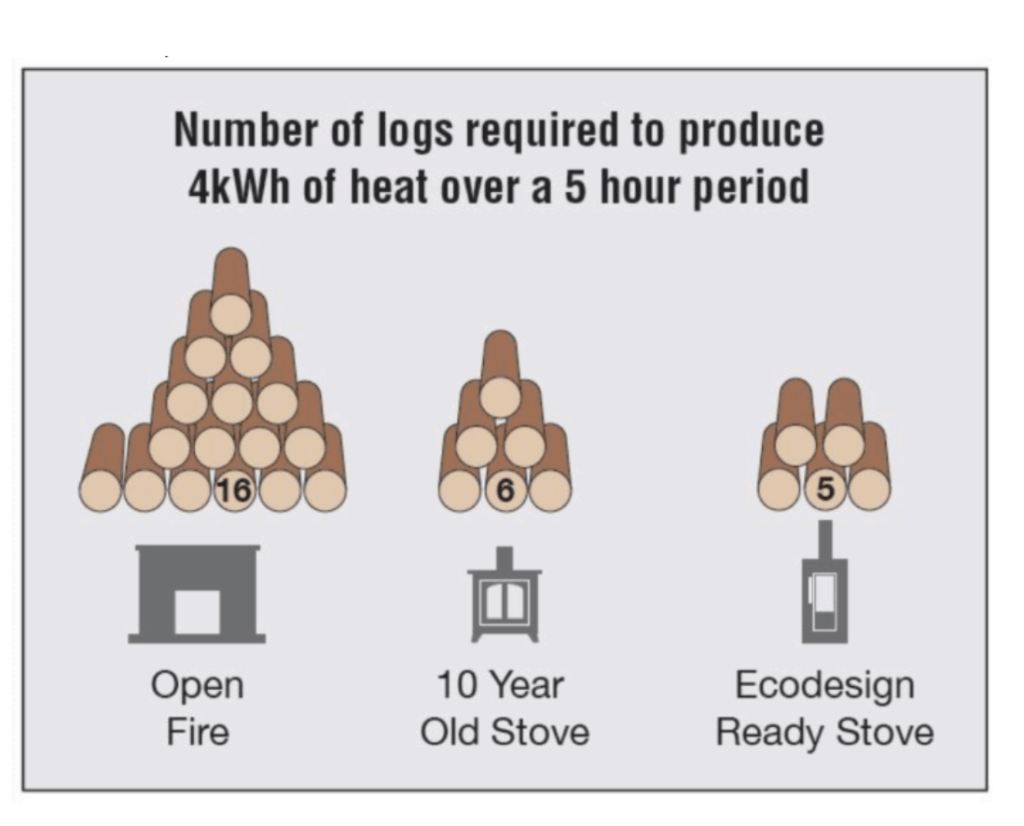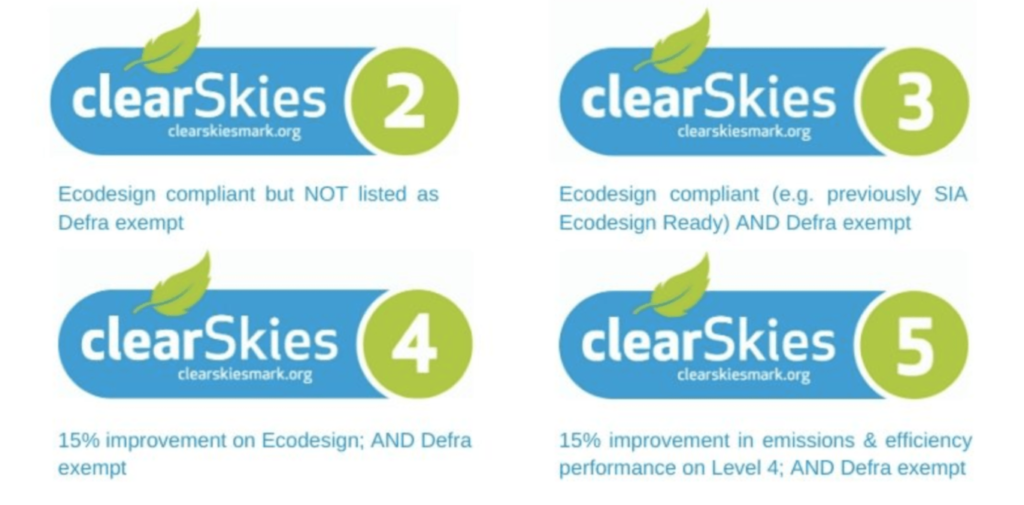Visualise a nostalgic scene from yesteryear. A cottage sat up in the hills with smoke coming from the chimney wisping its way up into the sky. It may be a nice scene you visualise, but the fact is if you can see smoke from a chimney it’s highly likely they are using the wrong fuel or are using an inefficient open fire.
All of a sudden this scene isn’t so great, is it?
Using open fires or burning incorrect fuel is not environmentally friendly. It contributes to pollution and also tars the reputation of appliances, such as Ecodesign Ready stoves, which are, in comparison, very environmentally friendly.
Ecodesign Ready stoves do exactly the same thing as an open fire, or an appliance burning incorrect fuel or unseasoned wood.
They combust and produce heat…
That’s where the similarities end, but sadly it’s only the start of misinformation and scaremongering. A clean, efficient burn is EVERYTHING to do with what you actually burn and on what appliance you decide to use. It’s as simple as that.
If you burn wood on an Ecodesign Ready stove with correctly seasoned wood (such as Ready to Burn certified) there is virtually no visible smoke from a chimney. These stoves emit up to 90% less particulate matter than an open fire, they also use a lot less wood for the same heat output, as the diagram below shows:

Beyond Ecodesign Ready:
The stove industry has gone well beyond Ecodesign Ready to prove its green commitments. Clearskies (https://www.clearskiesmark.org/) – is an independent certification mark for solid fuel stoves and fireplaces. Below is the criteria they use.

As you can see from the diagram above, the clearSkies start from level 2 to 5. All clearSkies Level 3 and above comply with both systems of emissions certification. Even better than this, it is now possible to identify products that are cleaner burning and outperform the basic Ecodesign requirements. Level 4 clearSkies indicates that a composite of emissions and efficiency are at least 15% better than baseline and Level 5 is 15%+ better than level 4 – all have DEFRA exemption.
Stoves are not just fashionable accessories for the few. Burning wood in stoves has long been the choice for environmentally-focused consumers. Furthermore, in rural areas, many thousands are in fuel poverty and burning wood is the only choice they have.
Domestic wood burning “the single biggest source of PM2.5 air pollution”
This point above has been time and again strongly disputed by the stove and wood-burning industry as the calculations to make this statement are fundamentally flawed, as is the comparison between stoves and pollution from HGVs – more about this can be read in this recent article we produced.








